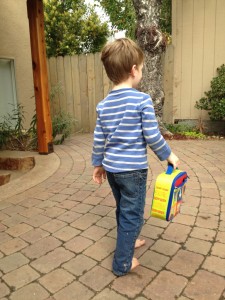MELT is….
Hands off bodywork
Sophisticated Self Care
Something relatively new and revolutionary
I was in chronic pain when Pilates came into my life in my mid-twenties and Pilates didn’t change that. Pilates helped me stay strong in spite of my challenges. Pilates helped me cope with my challenges. Pilates gave me temporary relief. These were great benefits of my Pilates practice and they are why Pilates remained a cornerstone of my self-care for over 15 years.
With over years of regular Pilates workouts under my belt I realized that I ultimately wanted more than coping strategies. Around this time I spotted a MELT roller in a friend’s living room and I started to learn about the method behind the roller. It took a few more years before I had the resources to learn MELT fully and begin to notice the dramatic improvements that Sue Hitzmann promised came from regular practice of her techniques.
MELT is based on hands on body work techniques. With considerable time experimenting, Sue was able to recreate the specialized work she did with her hands that had such remarkable results for her NYC clients. Generally speaking, Sue drew from light-touch modalities such as cranial sacral therapy and neuromuscular therapy when she developed the MELT method. These are sophisticated techniques that aren’t easy to find but that do offer relief for many. Even with that though, repeated visits are key to finding relief.
Sue became determined not only to help her clients when they were seeing her regularly, but to help them help themselves so that they didn’t need to keep seeing her. By practicing the do-it-yourself portion of their self-care regimen at home Sue’s clients were empowered to find full resolution to their concerns. This is a key component that sets MELT apart. When we engage in the work for ourselves, the results are different.
That said, there is no permanent cure-all. As long as we are living, our bodies are designed to repair and restore on a daily basis. MELT helps us to help our bodies to do that work consistently. We do need to MELT regularly to continue to derive benefit from the techniques. And it’s also reasonable to expect that we will need the help of highly skilled bodyworkers periodically. When we MELT regularly, our bodywork sessions tend to be far more productive which means we don’t need to spend as much time or money to get the good results that we are after. All told, with MELT we have a far better chance of getting out and staying out of chronic pain AND ensuring that the time and money that we invest in bodywork sessions will be a good use of our resources.
MELT ushers us into a paradigm shift around what it means to be healthy. Joe Pilates spoke to this idea when he talked about normal health. Sue has given us even more sophisticated tools than Joe had to offer. This is partly because her point of departure was bodywork whereas Joe’s was movement, and partly because while a lot was known about the body when Joe developed his work, a lot more is known now.
When we make the shift toward maintaining a regular self care practice we still need the help of highly skilled practitioners we just aren’t as dependent on them for the daily management of our physical bodies. Rather, we are able to use bodywork sessions for periodic maintenance and to make bigger and more sustained progress in our process of resolving what before may have seemed like unresolvable issues.
As inquiring minds continue to increase their understanding of the connective tissue system and the nervous system through scientific based exploration, the basic underpinnings of the MELT method are verified and better understood. Sue could always feel the effects of her touch because of her sensitivity to energy which certainly enabled her to develop MELT in the first place. But when bringing something that is truly new to the world at large, the more ways its efficacy can be explained and understood, the better.
Proof remains the bottom line for everyone (Paul Simon was right). When it comes to those of us who have MELTed our way out of chronic pain, the understanding and deeper explanations are good to help sustain us. Just as Pilates was critically important to me for so long because it helped me cope, the bottom line is that MELT is part of my daily life because it helps me feel healthier with every passing day.
